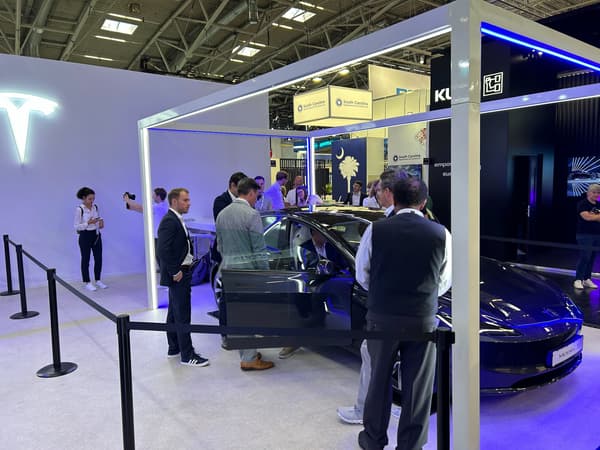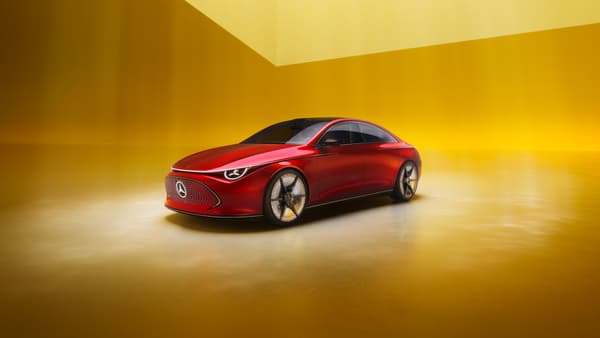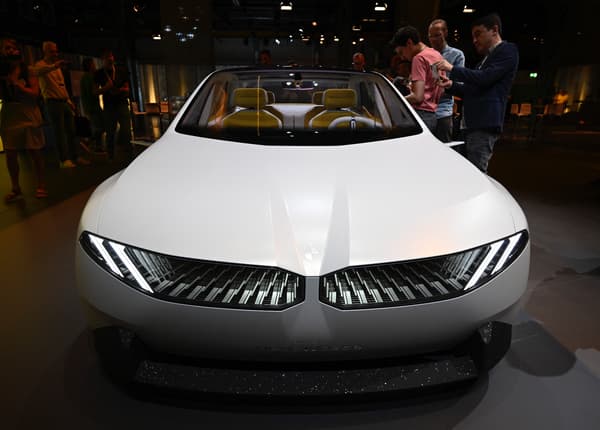620 kilometers in Renault, 678 km in Tesla, 700 km in Volkswagen or even 750 km in Mercedes… the race for electric autonomy is relaunched at the Munich Motor Show, which has just opened its doors on Monday, September 4 .
A trend that is not new, since this criterion of autonomy continues to be crucial for consumers who plan to go electric. But a pause at the end of the day with a supposed reduction in maximum autonomy, to stick more to daily use (about fifty kilometers on average) and, above all, to lower the final price of the vehicle.
620 km for the Scénic, a new frontier for Renault
Renault has just presented its new Scénic. A benchmark for the family vehicle that becomes 100% electric, something that did not happen with more imposing models such as the latest Espace or the Austral, offered in a hybrid version.

While the Mégane E-Tech offered up to now an announced maximum range of 470 km, Renault has reached a new level with 620 km in the Scénic. An 87 kWh battery, which, specifically, allows you to make a Paris-Bordeaux with a single major recharging stop or a Paris-Mont Saint-Michel without stops.
The advertised autonomy (according to the WLTP standard in Europe) should effectively be taken as an indicator that allows vehicles to be compared with each other in a so-called mixed use (between urban driving, on small roads and on motorways). But this is not the maximum autonomy on the road, since consumption increases considerably in electric vehicles. For this reason, a Paris-Bordeaux, of just under 600 km, cannot be done without a stop to recharge, even with a vehicle that has a range of more than 600 km.
Renault has not yet given prices for its new Scénic, knowing that it will also be offered with a less impressive 60 kWh battery, with an announced range of 420 km. A model that consumers might favor, even if more stops to recharge are required on long journeys, thanks to a more affordable price. Subject to follow…
Tesla Model 3: a benchmark in progress
Tesla has just introduced a new version of the Model 3, its best-selling sedan. Already recognized as a benchmark in terms of autonomy and consumption, it further improves this point. From 491 km to 602 km for the Propulsion and Long Range versions, the ranges increase to 554 and 678 km.

Note that Tesla no longer reports data on these batteries in kWh since 2017. Enough to be able to vary the sizes or chemistries (NMC or LFP) of the battery packs offered, noting a theoretical range in kilometers, which is more meaningful to customers.
This gain in autonomy, along with other improvements to the program, also implies a price increase of 1,000 euros compared to the previous Model 3. It now starts at 42,990 euros in France.
700 km for the Volkswagen ID.7
Like Renault, Volkswagen also improves its maximum autonomy score with its ID.7, a large 100% electric saloon, equipped with an 86 kWh battery.

With almost 5 meters long, it wants to compete with another Tesla model, the Model S, which boasts up to 723 km of autonomy (from 94,990 euros).
Volkswagen should quickly communicate the prices of its ID.7, with the opening of orders scheduled for this month of September. In Germany, the brand has announced a fairly aggressive starting price for this type of model, from 56,995 euros, but it remains to be seen what autonomy will be offered at this price.
Mercedes CLA Concept 750 km
It is undoubtedly a concept car, but Mercedes presents it as the near future of its electric range and a sample of its new dedicated MMA platform (for “Mercedes-Benz modular architecture”).

With 750 kilometers announced, this CLA concept allows us to anticipate the brand’s future sedan with the star, scheduled for 2024.
“The new in-house developed powertrain features an 800V electrical architecture combined with a battery of exceptional energy density and a highly efficient electric powertrain.”points out the brand in its press release.
Mercedes is in particular adapting the technologies developed in its EQXX concept, which had covered more than 1,000 km on a single charge in April 2022, to promise a consumption of 12 kWh per 100 km.
With the new CLA, two other models should take advantage of this new MMA platform, two small SUVs close to the formats of the current GLA and GLB.
BMW inaugurates its “New class”
Another highly anticipated platform, the “New class” from BMW, whose first production models are expected by 2025. Six in total, from sedans to SUVs.

However, BMW has not yet given forecast figures on the announced autonomy of its future models.
This new generation “30% longer battery life, 30% faster charging, 25% more efficiency”simply states the German group in its press release.
For a BMW iX that currently boasts up to 629km of range, a 30% increase would bring that figure to just over 815km.
Chinese manufacturers, rather fashionable prices?
Strongly present at the Munich show, Chinese manufacturers are well behind this race for autonomy. BYD, for example, presents its Seal U, a rival compact SUV to the Model Y, with an announced range of between 420 and 500 km. Figures quite close to the Tesla model, which marks between 455 and 533 km, but without pretending to be above it at all. A way also to focus on the sale price, a big topic at the moment.
Let’s see what the other models presented by Leapmotor, Zeekr or MG will offer at the fair.
Source: BFM TV

